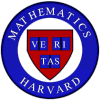
|
Summer Tutorials 2002 |  |

|
Summer Tutorials 2002 |  |
| NOTE: This is an archived page from a previous tutorial. Information about the current tutorials can be found here. |
|
|
|
Greetings, I am writing to officially announce the 2002 version of our Summer Tutorial program. The idea here is to offer you some interesting mathematics if you have an ulterior motive for being in the Boston area during July and the beginning of August. In particular, the tutorials will run for six weeks starting roughly at the beginning of July, meeting twice per week in the evenings (so as not to interfere with day time jobs). The format will be much like that of the term time tutorials, with the tutorial leader lecturing in the first few meetings and students lecturing later on. Here, I should say that these tutorials have no official Harvard status, so you won't receive either Harvard or concentration credit for them. Moreover, enrollment in the tutorial does not qualify you for any Harvard related perks (such as a place to live). However, the Math Department will pay each student participant a stipend of $600 and you can hand in your final paper from the tutorial for you junior 5-page paper requirement. If there is sufficient interest, we will be offering 4 tutorials this summer; the topics and leaders are as follows:
You can sign up for a tutorial by emailing your desire to me at chtaubes@math. When you do sign up, please list at least one other choice in case your desired tutorial is either over subscribed or under subscribed. What follows are some brief descriptions of the tutorial topics. If you have further questions about the topics, contact the tutorial leader via the email address given below. If you have questions about the administration of the tutorials, ask me. -- Cliff Taubes |
|
|
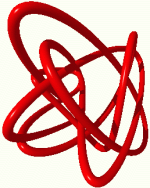 This tutorial will introduce the theory of knots and 3-dimensional
manifolds. We will start by addressing the question: How can one prove
that two knots can or cannot be deformed into each other? Then, we will
move on to discuss four different procedures for constructing
3-dimensional manifolds: Heegard splittings, surgery, branched coverings
and geometric decompositions. The first three of these are related to
knot theory, while the fourth makes use of differential geometry. We will
also study Seifert fibrations and enumerate the eight 3-dimensional
geometries. One goal is to understand the importance of Thurston's
geometrization conjecture for the classification of 3-manifolds.
This tutorial will introduce the theory of knots and 3-dimensional
manifolds. We will start by addressing the question: How can one prove
that two knots can or cannot be deformed into each other? Then, we will
move on to discuss four different procedures for constructing
3-dimensional manifolds: Heegard splittings, surgery, branched coverings
and geometric decompositions. The first three of these are related to
knot theory, while the fourth makes use of differential geometry. We will
also study Seifert fibrations and enumerate the eight 3-dimensional
geometries. One goal is to understand the importance of Thurston's
geometrization conjecture for the classification of 3-manifolds. Prerequisites: A basic knowledge of manifolds a knowledge of topology at the level of Math 131. For further information, contact Ciprian Manolescu ciprian@math . |
|
|
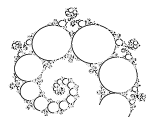 In this tutorial, we will try to understand some of the interesting
things that can happen when one applies Mobius transformations to
points in the Riemann sphere (or complex plane). With one Mobius
transformation, this question is not very interesting, but already if
one considers the group generated by z -> (z+1) and z -> (1/z + t),
where t is a constant, an incredible range of complex phenomena are
observed, and there are still unanswered questions about what happens
as t is varied.
In this tutorial, we will try to understand some of the interesting
things that can happen when one applies Mobius transformations to
points in the Riemann sphere (or complex plane). With one Mobius
transformation, this question is not very interesting, but already if
one considers the group generated by z -> (z+1) and z -> (1/z + t),
where t is a constant, an incredible range of complex phenomena are
observed, and there are still unanswered questions about what happens
as t is varied. We will approach these kinds of questions through intuitive, experimental, and mathematical means, often pausing to admire geometric and analytic objects that pop up naturally along the way. Our textbook, "Indra's Pearls: An Atlas of Kleinian Groups" by David Mumford, Caroline Series, and David Wright, has countless images of the beautiful fractal objects (limit sets and discreteness slices) that appear in these investigations. We will follow their analysis while extending the mathematical background they develop, emphasizing detailed understanding of specific examples. For further information, see the tutorial webpage or contact David Dumas ddumas@math |
|
|
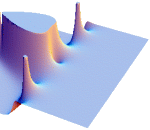 The phrase "analytic number theory" seems at first glance to be an
oxymoron, as the whole numbers are a discrete world which seems entirely
divorced from the world of continuous functions. However, several
centuries ago Euler made the startling observation that important facts
about the distribution of prime numbers are related to much simpler
properties of certain analytic functions. This course will explore this
amazing connection, focusing on Riemann's Zeta function and Dirichlet's
L-functions and their applications to the distribution of primes in the
integers. In particular, we will prove the famous prime number theorem
and Dirichlet's theorem on primes in arithmetic progressions. Later
lectures and individual research projects will explore other closely
related functions which give information about systems similar to the
integers. Highlights from the end of the course will include
Dirichlet's analytic class number formula for quadratic imaginary fields
and the prime number theorem for Fp[x].
The phrase "analytic number theory" seems at first glance to be an
oxymoron, as the whole numbers are a discrete world which seems entirely
divorced from the world of continuous functions. However, several
centuries ago Euler made the startling observation that important facts
about the distribution of prime numbers are related to much simpler
properties of certain analytic functions. This course will explore this
amazing connection, focusing on Riemann's Zeta function and Dirichlet's
L-functions and their applications to the distribution of primes in the
integers. In particular, we will prove the famous prime number theorem
and Dirichlet's theorem on primes in arithmetic progressions. Later
lectures and individual research projects will explore other closely
related functions which give information about systems similar to the
integers. Highlights from the end of the course will include
Dirichlet's analytic class number formula for quadratic imaginary fields
and the prime number theorem for Fp[x]. Prerequisites: Basic complex analysis (at the level of Math 113). No knowledge of number theory will be required, although familiarity with either elementary number theory (Math 124), or some basic ring theory (Math 123) would be helpful. For further information, contact Noah Snyder nsnyder@fas.harvard.edu |
|
|
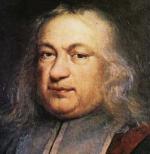 In the early 1990's A. Wiles and R. Taylor proved Fermat's
Last Theorem by showing that all semistable elliptic curves are modular.
Their work brought together many of the most exciting new ideas in number
theory, and of course produced many more ideas that are far from fully
investigated. What's truly amazing is that, starting with a solid
background in basic abstract algebra (Math 122, 123, 126), you can build
up to most of the underlying techniques in just a few weeks. We'll study
modular forms and their Hecke algebras, elliptic curves and their
associated Galois representations, and deep relations between these
objects.
In the early 1990's A. Wiles and R. Taylor proved Fermat's
Last Theorem by showing that all semistable elliptic curves are modular.
Their work brought together many of the most exciting new ideas in number
theory, and of course produced many more ideas that are far from fully
investigated. What's truly amazing is that, starting with a solid
background in basic abstract algebra (Math 122, 123, 126), you can build
up to most of the underlying techniques in just a few weeks. We'll study
modular forms and their Hecke algebras, elliptic curves and their
associated Galois representations, and deep relations between these
objects.
Prerequisites: Comfort with the material in Math 122 and 123. For further information, contact: Peter Green green@math.harvard.edu |
|
|